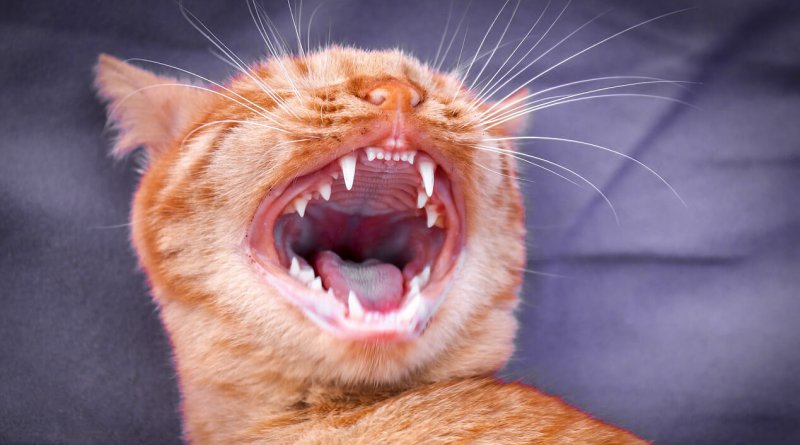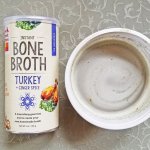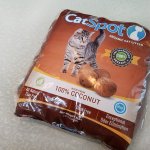How to Clean Your Cat’s Teeth at Home: 3 Natural Cat Teeth Cleaning Solutions
Last Updated on
In this article, we’re going to take a closer look at the reasons why you should clean your cat’s teeth at home and include a guide on how to get started. We’ve also included three natural cat teeth cleaning solutions so you can start taking better care of your cat’s teeth right away. For more information on cat dental care, including our guides to the best cat toothpaste and toothbrushes, check out the additional resources at the bottom of this article.
Quick Navigation
- 1. Why Should You Clean Your Cat’s Teeth at Home?
- 2. How to Get Started Cleaning Your Cat’s Teeth at Home
- 3. Additional Resources
Disclaimer: Some of the product links in this article are affiliate links and Wildernesscat will receive a percentage of the sale. It doesn’t cost any extra if you buy through the links but helps us to continue sharing the radical cat parenting message. Thank you!
Why should you clean your cat’s teeth at home?
We’re probably all familiar with one very obvious symptom of periodontal disease: bad breath. Many people pass off bad breath as being a normal part of a pet’s mouth. It’s not—bad breath is one big sign that your cat is suffering from poor dental hygiene. Unfortunately, and can be prevented through natural teeth cleaning.
Let’s take a closer look at the types of dental diseases that can contribute to bad breath and an unhealthy mouth.
Gingivitis is one of the most common and easily-reversed forms of cat dental disease. Swollen, inflamed gums are indicative of gingivitis. Gingivitis occurs when plaque is allowed to collect on a cat’s teeth unchecked, eventually making its way under the cat’s gums and hardening into tartar or calculus. This tartar makes the perfect home for bacteria to cling to. This bacteria can, in turn, cause an immune response, leading to inflamed and bleeding gums.
Periodontitis can affect a cat’s mouth if gingivitis isn’t treated in time. The tissue surrounding your cat’s teeth will weaken and eventually, the tissue will separate from the tooth and bone structure. The ensuing pockets can harbor bacteria, leading to painful infections. This tissue separation is irreversible and often the only solution is tooth extraction.
If your cat is already showing signs of periodontal disease (really bad breath, bleeding or receding gums, mouth soreness) a professional dental cleaning is likely in order.
How much does professional cat teeth cleaning cost?
Many people neglect their cat’s dental hygiene until it begins to affect their health. At this point, they’re forced to head to a veterinarian for professional help.
A professional cat dental cleaning can cost from $150 – $500 depending on your location. If you add the cost of extractions to that, you’re looking at expenses that might go into the thousands. Instead of waiting for your cat to develop periodontal disease, take a proactive approach to your cat’s dental health.
Learn how to clean your cat’s teeth at home before periodontal disease sets in.
These natural teeth cleaning methods are intended for dental maintenance and they won’t reverse any damage that’s already happened. You’re in the right starting place if you want to maintain your cat’s already healthy mouth, or if you’ve just gotten back from the veterinarian and want to prevent the necessity of extra dental work in the future.
Let’s dive into the three ways you can take care of your cat’s teeth at home.
Brush your cat’s teeth regularly using a cat-specific toothpaste.
One of the best ways to prevent plaque buildup is to brush your cat’s teeth, just like you brush your own. We recommend using a small toothbrush designed for cats, or if you prefer, a bit of gauze wrapped around your finger. A small extra soft toddler toothbrush works as well. Take it slow at first, and over time, your cat should accept brushing simply as part of their daily routine.
The easiest way to get your cat to accept having their teeth brushed is by choosing a tasty toothpaste! Gladly, there are a number of cat toothpastes formulated to be safe for cats to swallow and appealing to their taste buds. Click the link for a complete list of our top cat toothpaste picks.
The toothpaste we currently use to brush Wessie and Forests’ teeth is Vetoquinol Enzadent Enzymatic Poultry-flavored Toothpaste. It’s our choice because it contains enzymes—meaning the toothpaste works to eradicate bacteria on contact. This is great for most cats because few cats actually hold still long enough to get a thorough brushing. The product link to Chewy is an affiliate link, which means that we’ll get a small commission if you purchase the toothpaste through our link. It won’t cost you any extra, though!
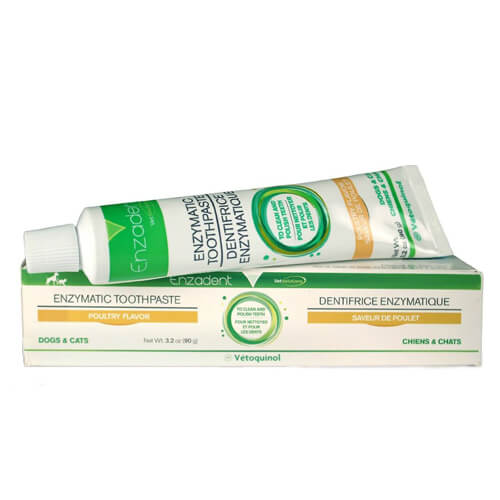
Give your cat a raw meaty bone to chew on.
To understand how raw food and bones clean cats’ teeth, think about cats living in the wild. Naturally, cats eat the bodies of raw animal prey. They crunch on their bones, effectively cleaning and strengthening their teeth. Unfortunately, many domesticated cats no longer have the opportunity to naturally clean their teeth this way. Today, most cats live inside, eat prepared food, and don’t get the tooth and jaw workout that they need. Though this makes feeding our cats more convenient, the popularity of unnatural, processed food for cats has been linked to an explosion in cat dental issues. Even if you don’t want to feed your cat an entirely raw diet, it’s easy to supplement with raw meaty bones.
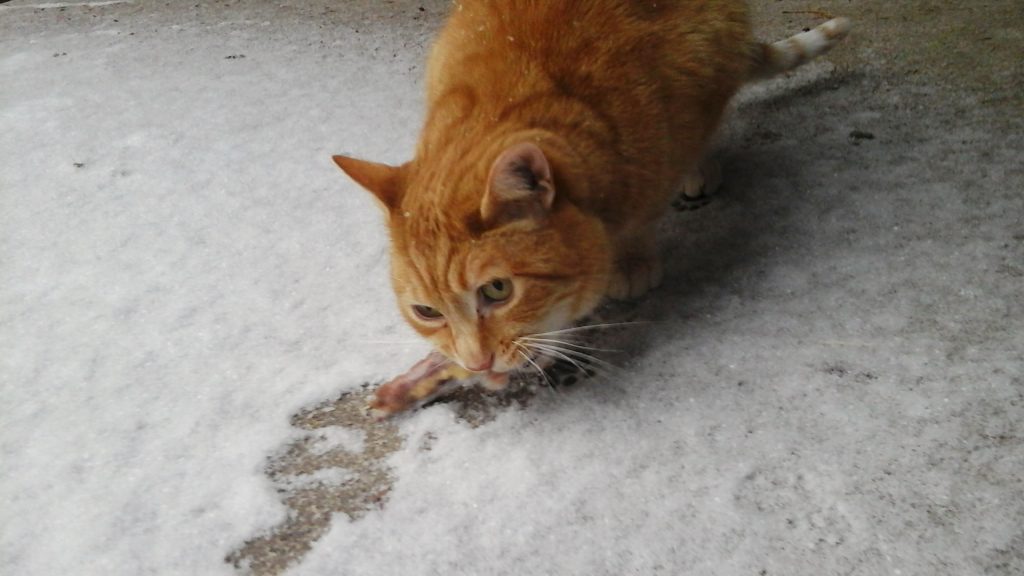
To replicate the tooth-cleaning effect of chewing bones, it’s recommended that you feed your cat a raw, bony piece of meat, like a chicken neck or wing, and let them naturally clean their teeth. Some cats don’t take to eating these parts whole at first and may need the neck or wing to be crushed with a mallet first. Feeding raw meaty bones is not a 100% effective method of keeping your cat’s teeth clean and should be a supplement to brushing. If you’d like to learn more about feeding your cat raw chicken wings, take a look at our video below.
Warning: Do not cook the bones before feeding them to your cat. Cooked bones break and splinter, presenting a danger to your cat. Unless your cat has an immunodeficiency, or is undergoing antibiotic treatments, the hostile environment of their stomach should be able to handle the bacteria that comes with raw meat.
All of this considered, raw meaty bones alone are not a substitute for a nutritionally complete food. They lack the necessary nutrients found in organs and do not have a balanced meat-to-bone ratio. If you are interested in feeding your cat a completely raw food diet, take a look at our article on making raw cat food at home to learn more.
Try brushing your cat’s teeth with coconut oil as a toothpaste alternative.

A healthy mouth isn’t the only benefit of giving your cat coconut oil. Many people report other benefits from feeding coconut oil to their cats. Coconut oil will also help your cat to maintain a smooth shiny coat, and reduce hairballs.
Make sure that you are using virgin coconut oil. Coconut oil that has been refined for high heat cooking lacks some of the vital ingredients that make the oil so beneficial.
It’s never too late to start cleaning your cat’s teeth at home.
Whether your cat is a kitten who still has its baby teeth or an older cat who just had most of their teeth extracted, it’s never too early or too late to start giving your cat’s mouth a little extra TLC. Here’s to many more happy and bad-breath-free licks from your cat!
Additional resources:
Best Cat Toothpaste of 2019: Top 5 Products That Actually Work
Best Cat Toothbrush: Your Guide to Choosing the Best Cat Toothbrush in 2018
Let’s End Cat Dental Disease: How to Brush Your Cat’s Teeth
Debunked: The Myth of Dry Cat Food for Dental Health
References:

